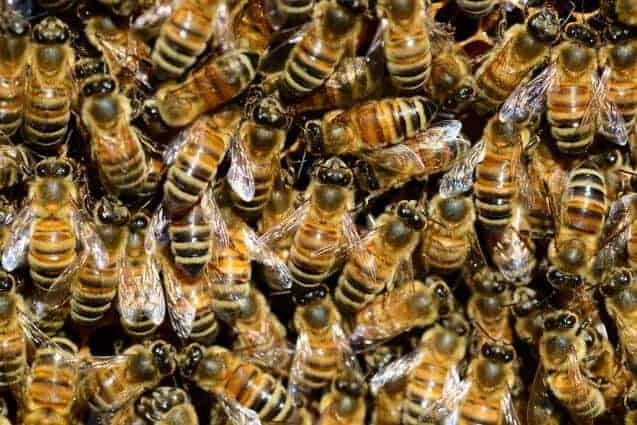Despite having few taste genes, honey bees are fine-tuned to know what minerals the colony may lack and proactively seek out nutrients in conjunction with the season when their floral diet varies.
This key finding from a new study led by Tufts University scientists sheds light on limited research on the micronutrient requirements of honey bees, and provides potentially useful insight in support of increased health of the bee population, which has declined rapidly in recent years for a variety of complex reasons.
The research, published in Ecological Entomology, suggests that beekeepers should provide opportunities for their bees to access specific nutrients, possibly through a natural mineral lick, to support their balanced health because the bees will search for the minerals when they need them. It is also an opportunity for the general public to support the bee population by planting a diverse range of flowers that bloom throughout the year.
“Currently, there are micronutrient supplements for managed bee hives on the market but there is little research backing up which minerals the bees actually need,” said Rachael Bonoan, the lead study author and a Ph.D. candidate in biology within the School of Arts and Sciences at Tufts. “The fact that honey bees switch their mineral preferences based on what is available in their floral diet is really exciting. This means that somehow, honey bees know which nutrients the colony needs. This insight helps us support honey bees and other pollinators by providing access to diverse nutrient sources all year long.”
Rachael Bonoan, PhD. candidate in biology The findings show that honey bees forage for essential minerals that aid their physiological health, even though they have relatively few taste genes. In the fall, when floral resources dwindle, the study showed that bees seek out specific nutrients – calcium, magnesium, and potassium, all commonly found in pollen – by foraging in compound-rich or “dirty” water. When flowers and pollen are abundant in the summer, the bees prefer deionized water and sodium, ultimately suggesting that bees are foraging for minerals in water based on what is lacking in their floral diet.
Bonoan and her research team studied eight honey bee hives that were located about 100 yards from the research area. The bees were trained to come to the research site because researchers placed jars of sugar water at staged intervals until the worker bees became accustomed to the ready food supply.
Researchers set up water vials with different minerals such as sodium, magnesium or phosphorus and catalogued the number of bees that visited each vial. At the end of the day, they also measured how much the bees drank from each vessel to determine which minerals were most in demand.
The researchers also tracked the hive each bee belonged to by dusting worker bees with different colored powders as they left the hives. The team noted which colored bees were drinking from which mineral-laden water source, and later measured the amount of brood to determine whether there is a connection between bee health and specific minerals.
The study results related to hive health were inconclusive. While stronger colonies do tend to visit more minerals than weaker colonies, it was difficult to determine which came first, being a stronger colony or accessing mineral resources. Additional data is necessary to assess colony fitness.
Additional authors are Taylor M. Tai, Department of Organismic and Evolutionary Biology at Harvard University; Marlen Tagle Rodriguez, Biomedical Engineering Department at the University of California, Irvine; Laine Feller, Biology Department, Villanova University; Salvatore R. Daddario, Department of Neuroscience at Pomona College, Claremont; Rebecca A. Czaja, Department of Marine and Environmental Sciences at Northeastern University, Boston; Luke D. O’Connor and Georgiana Burruss, both of Cape Eleuthera Institute, Rockland Sound, Eleuthera, The Bahamas; and Philip T. Stark, associate professor, Biology Department at Tufts University, Medford, MA.
This study was supported by the National Science Foundation’s Research Experiences for Undergraduates program.
Bonoan et al. “Seasonality of salt foraging in honey bees (Apis mellifera)” Ecological Entomology (2016). DOI:10.1111/een.12375

